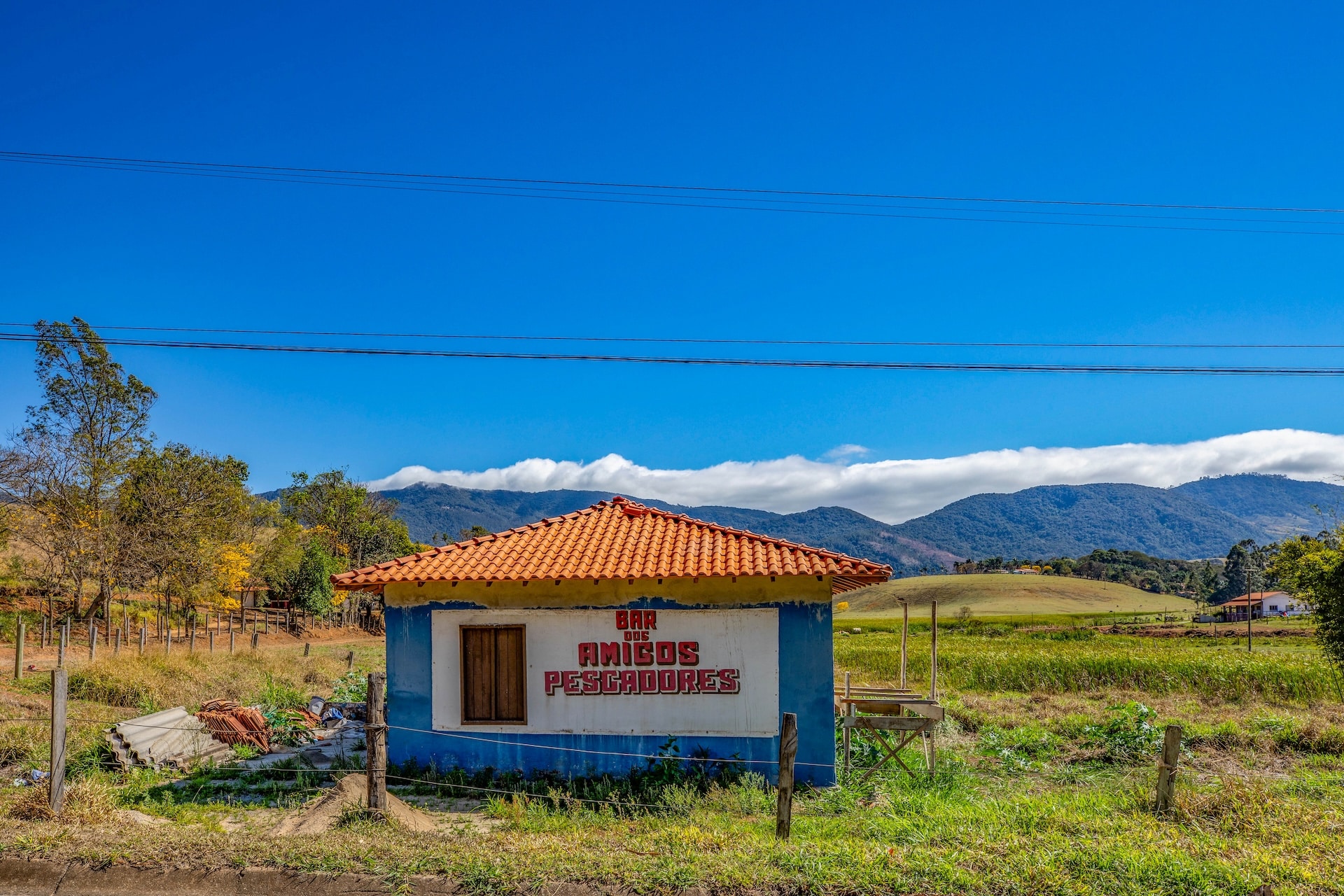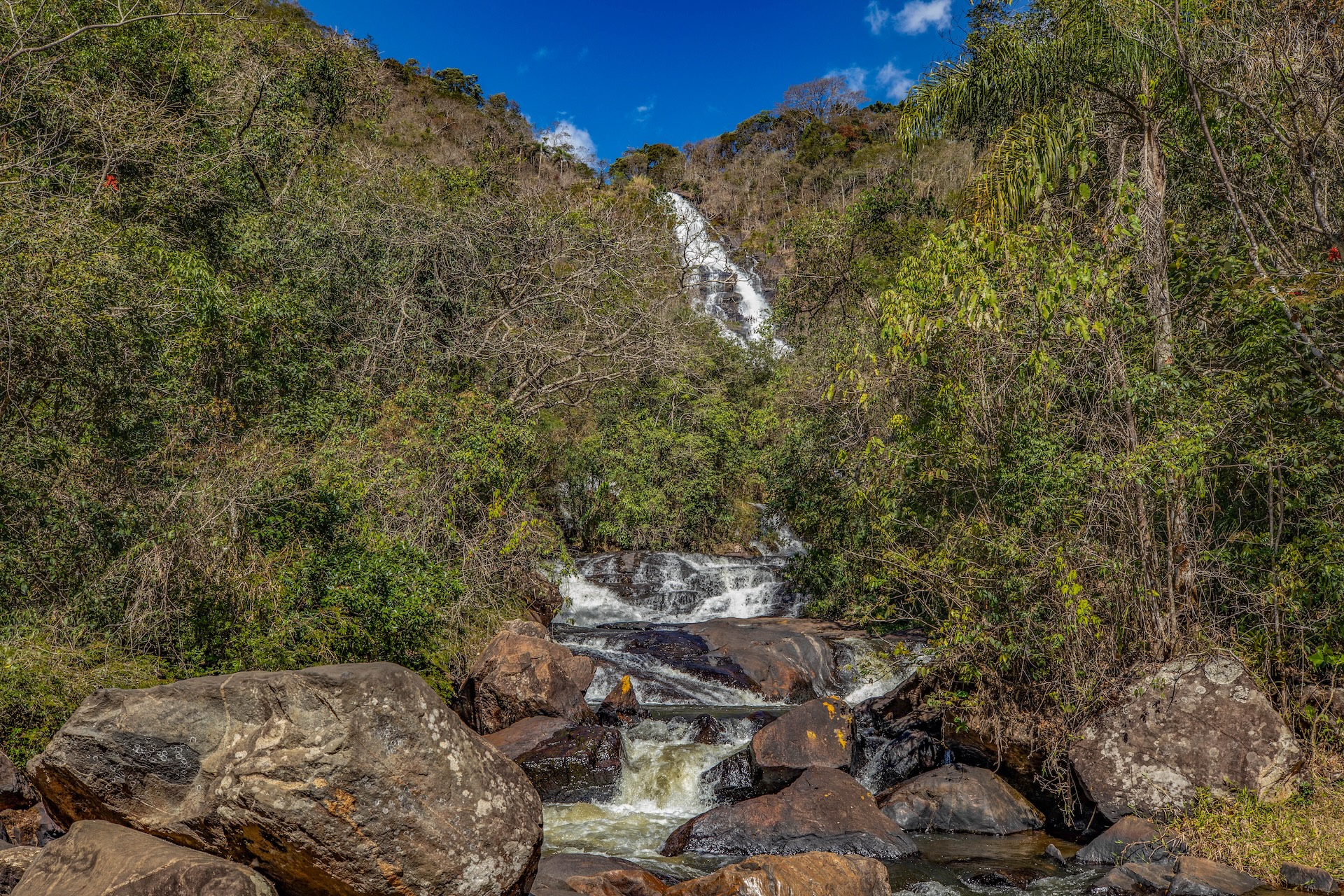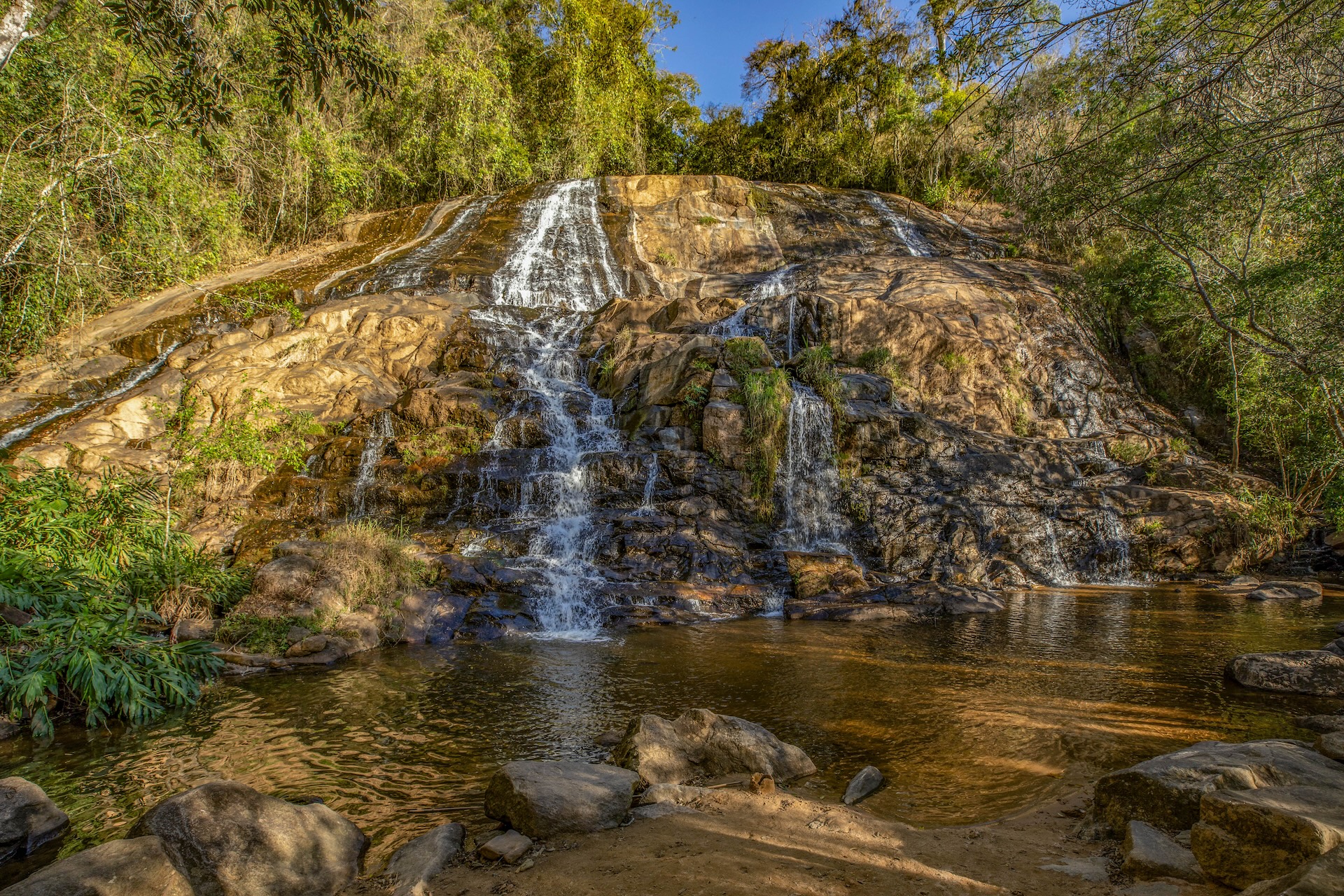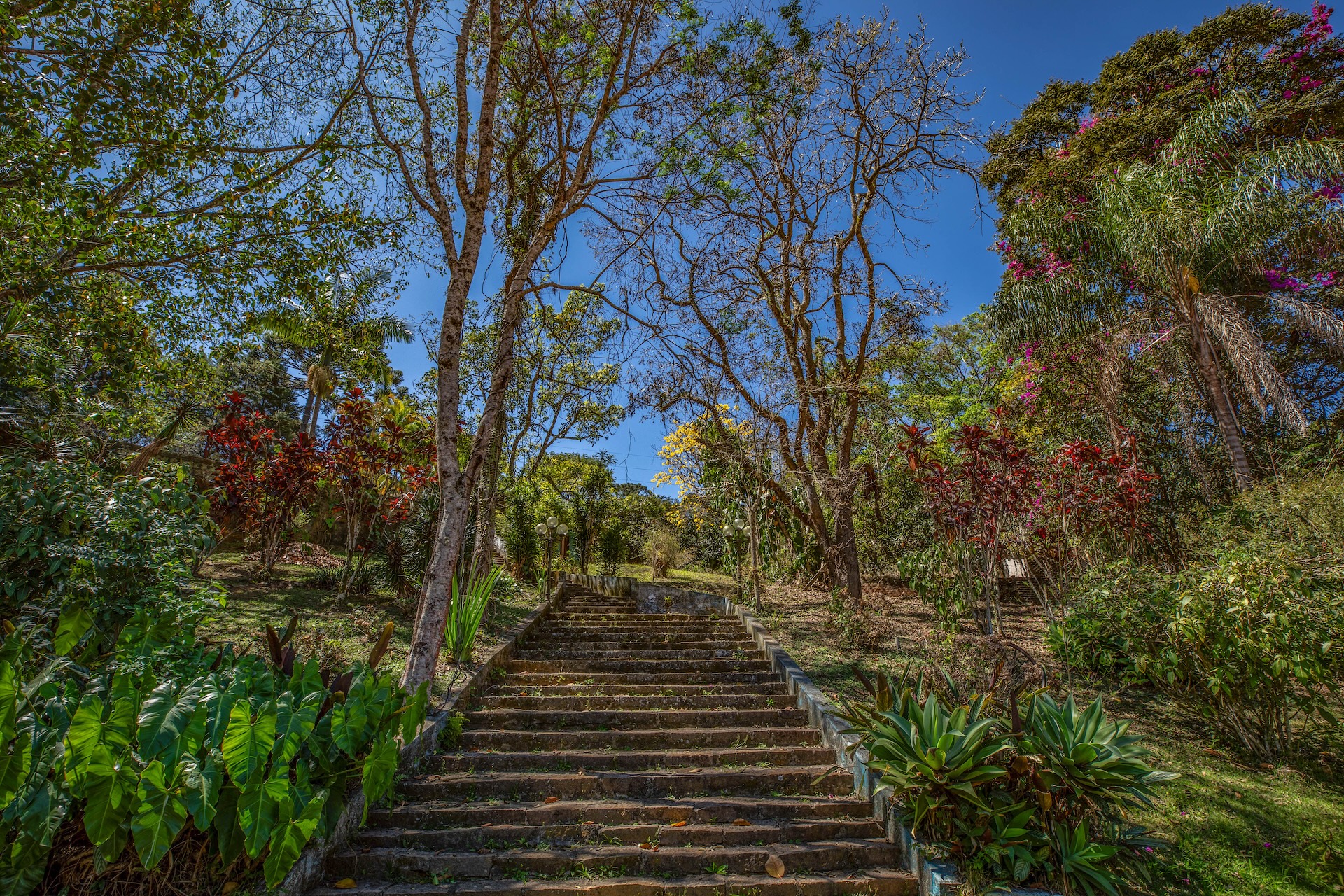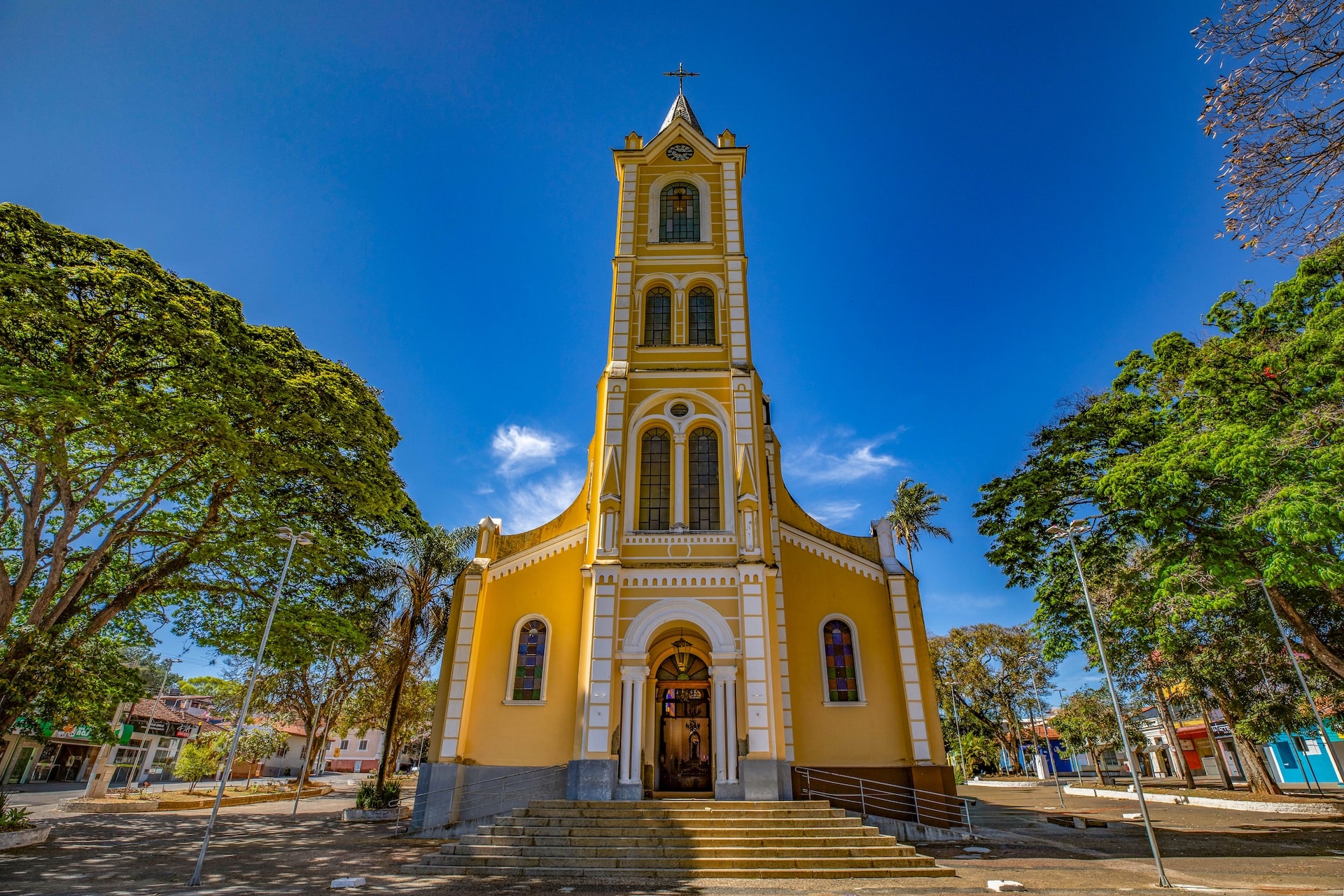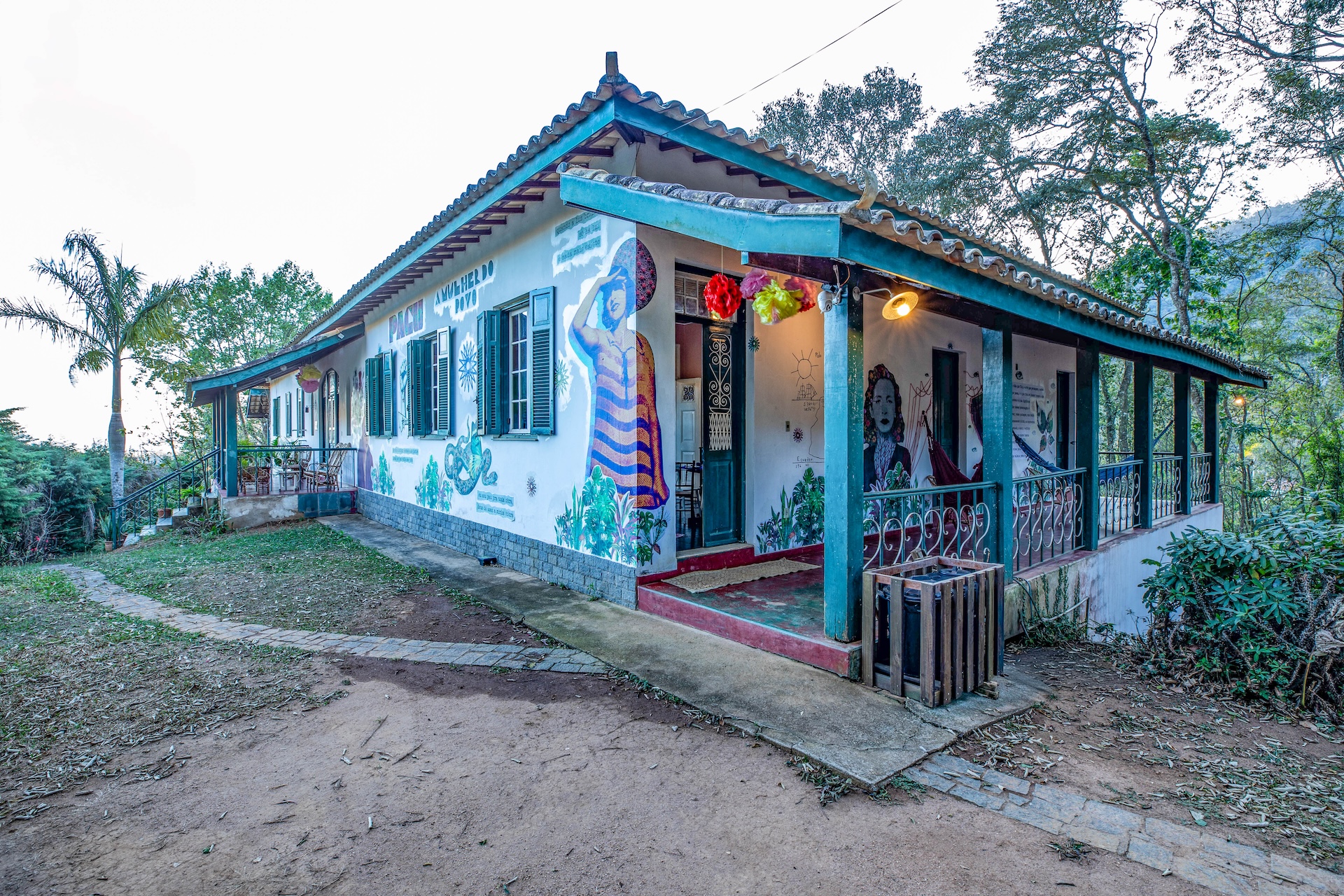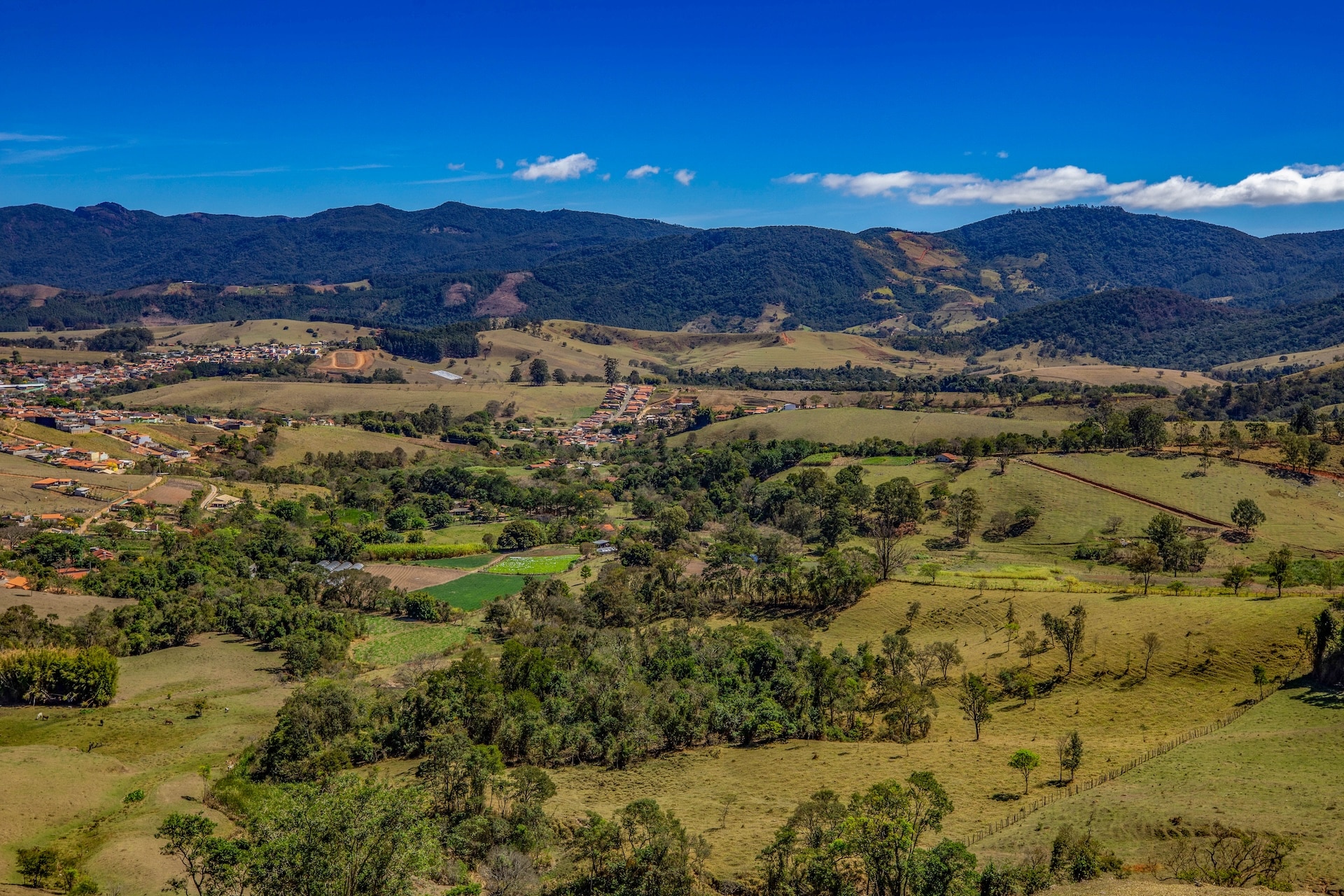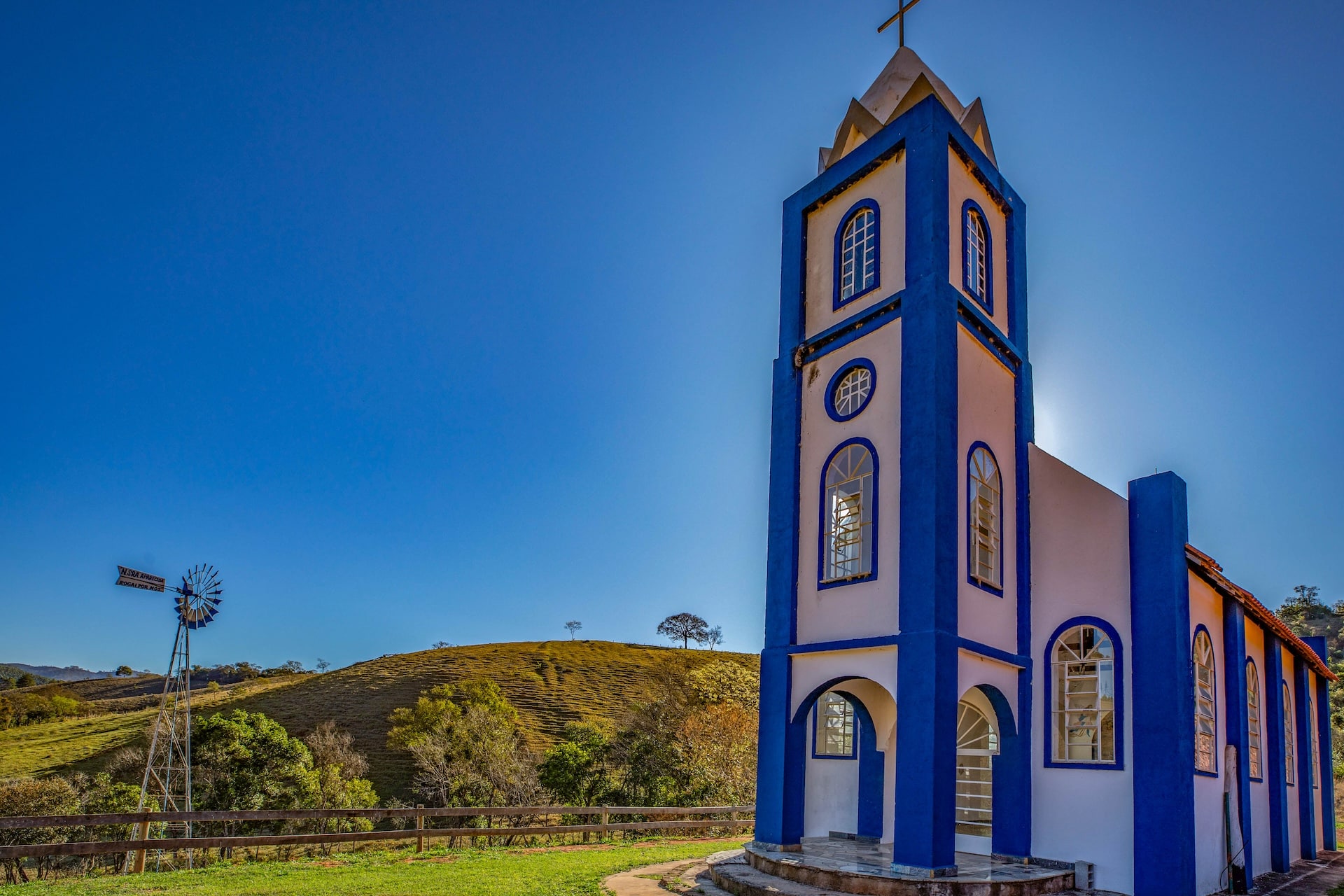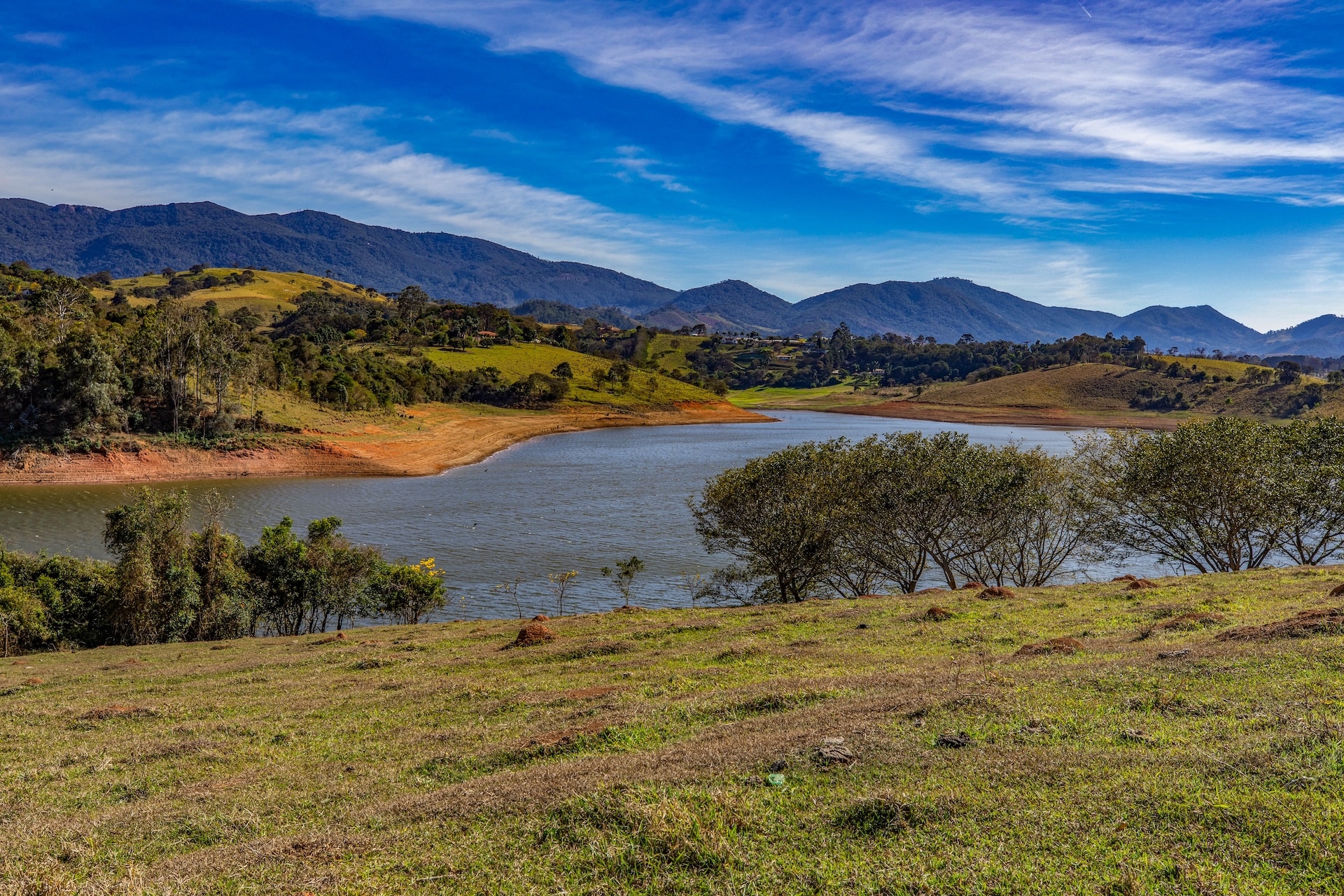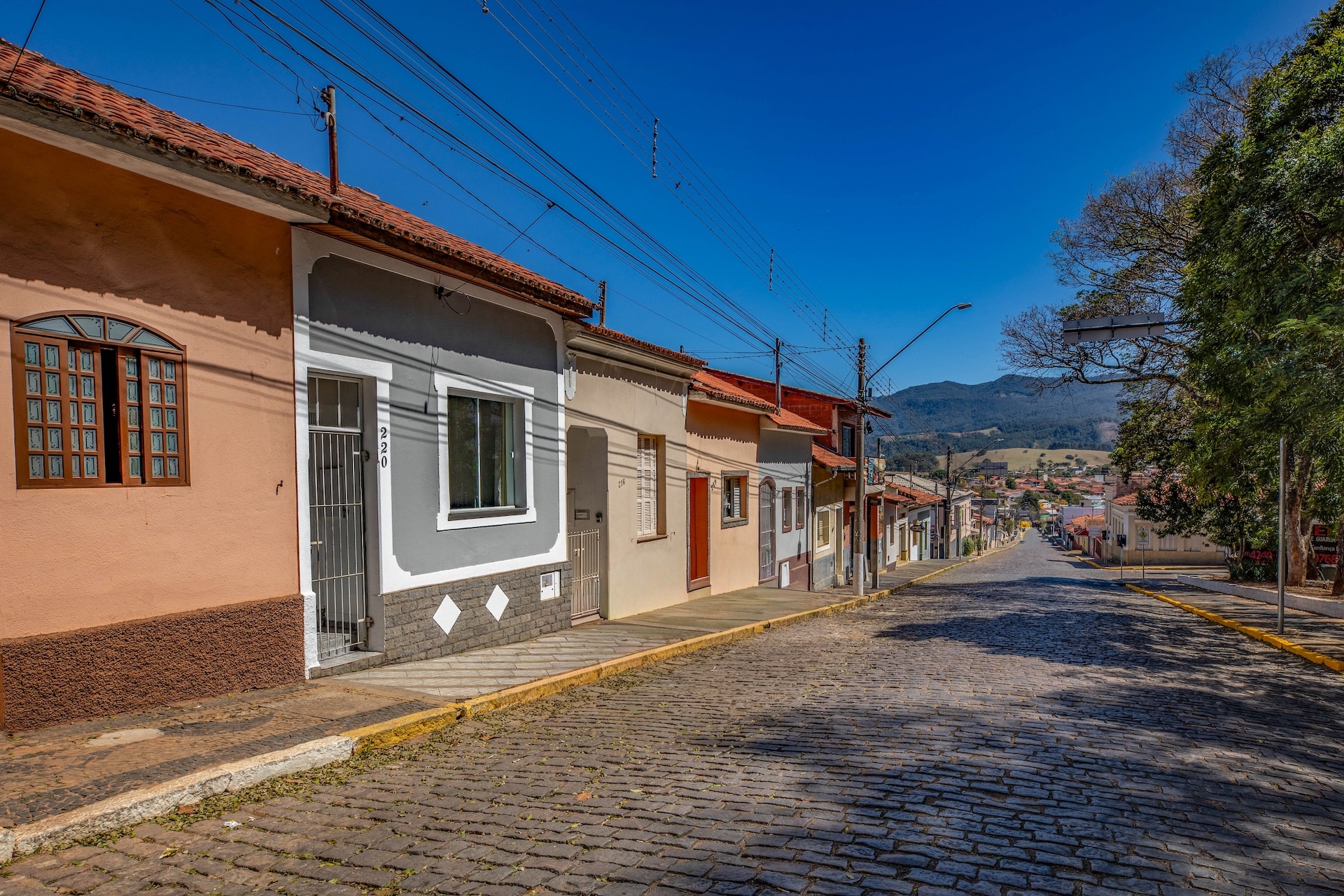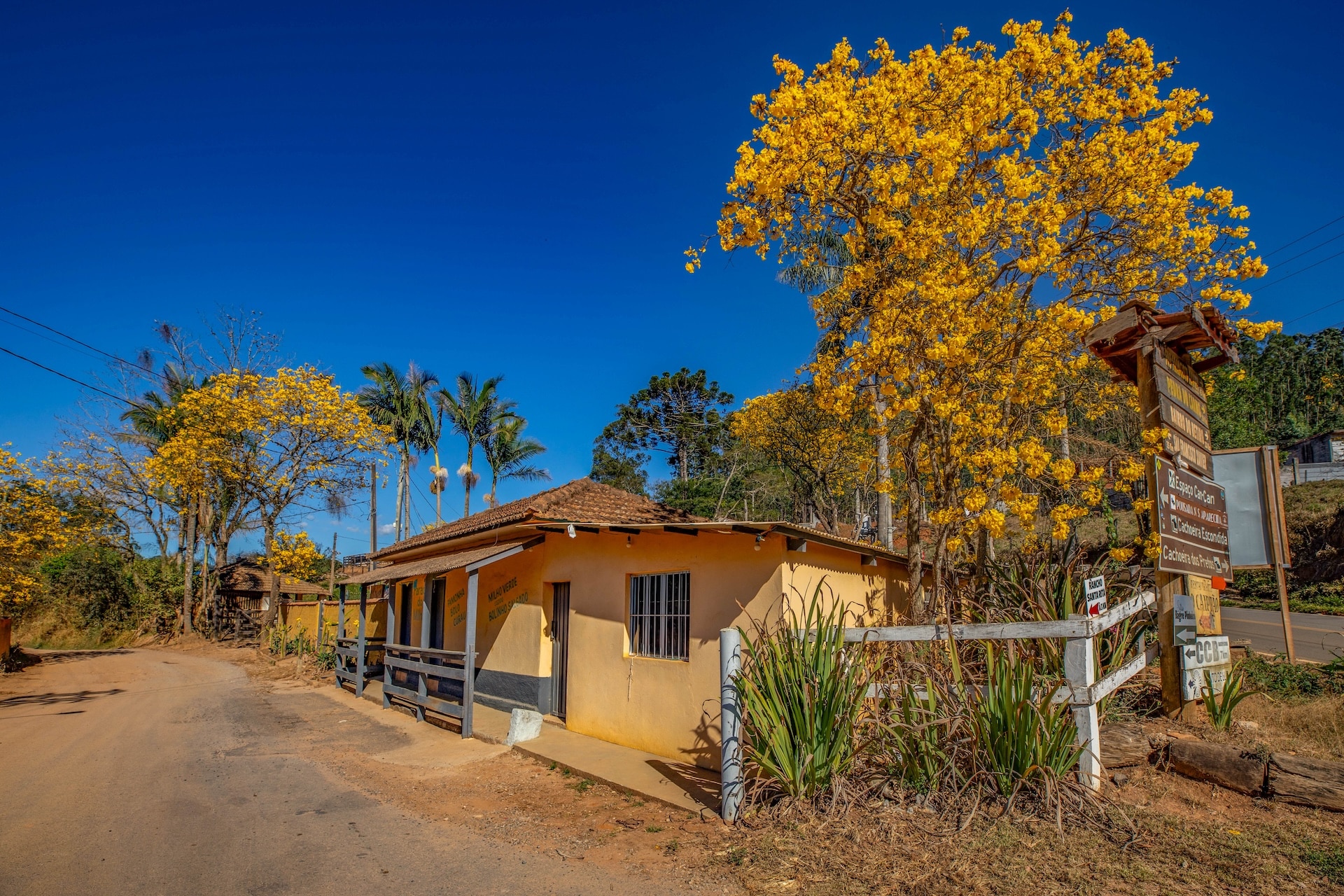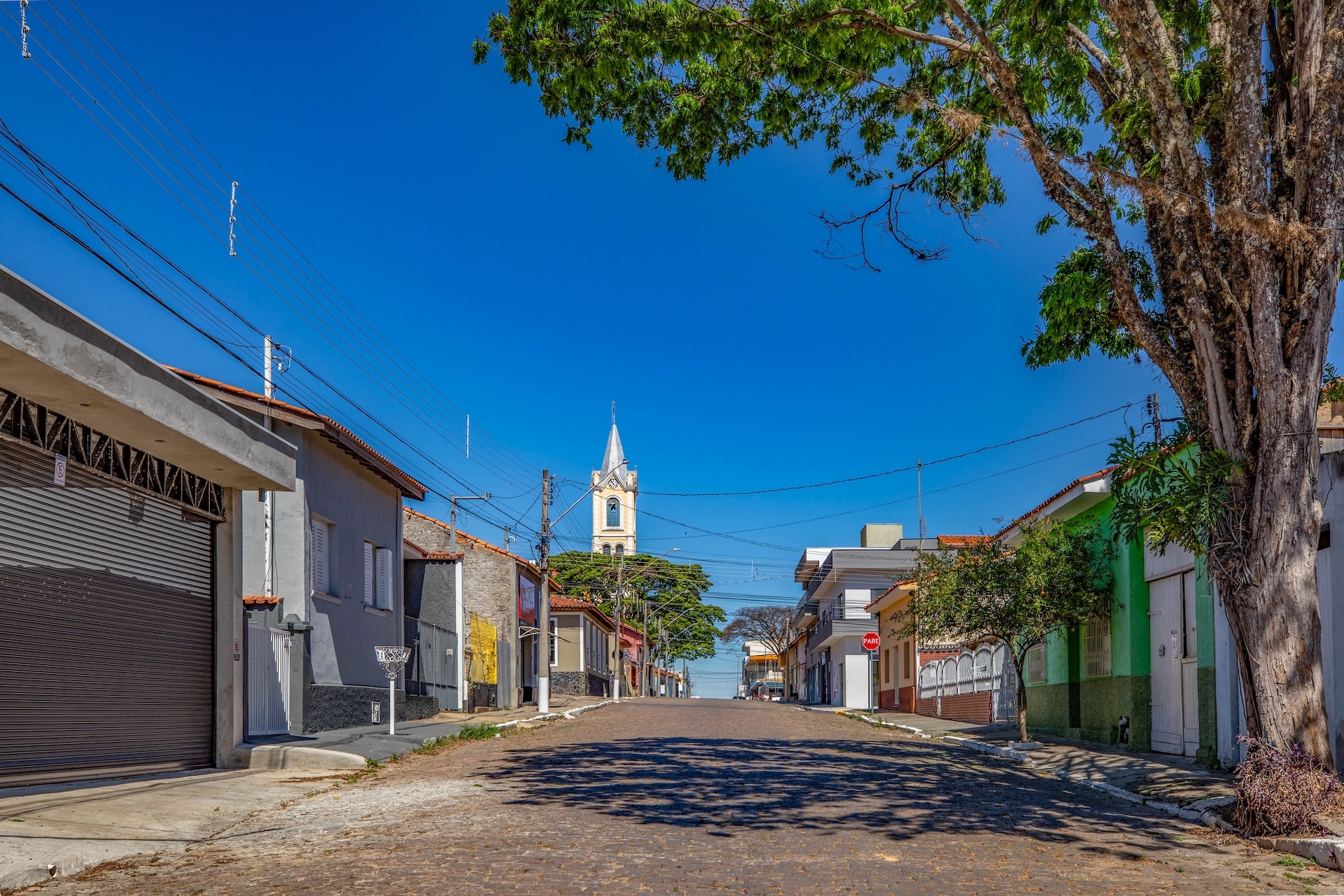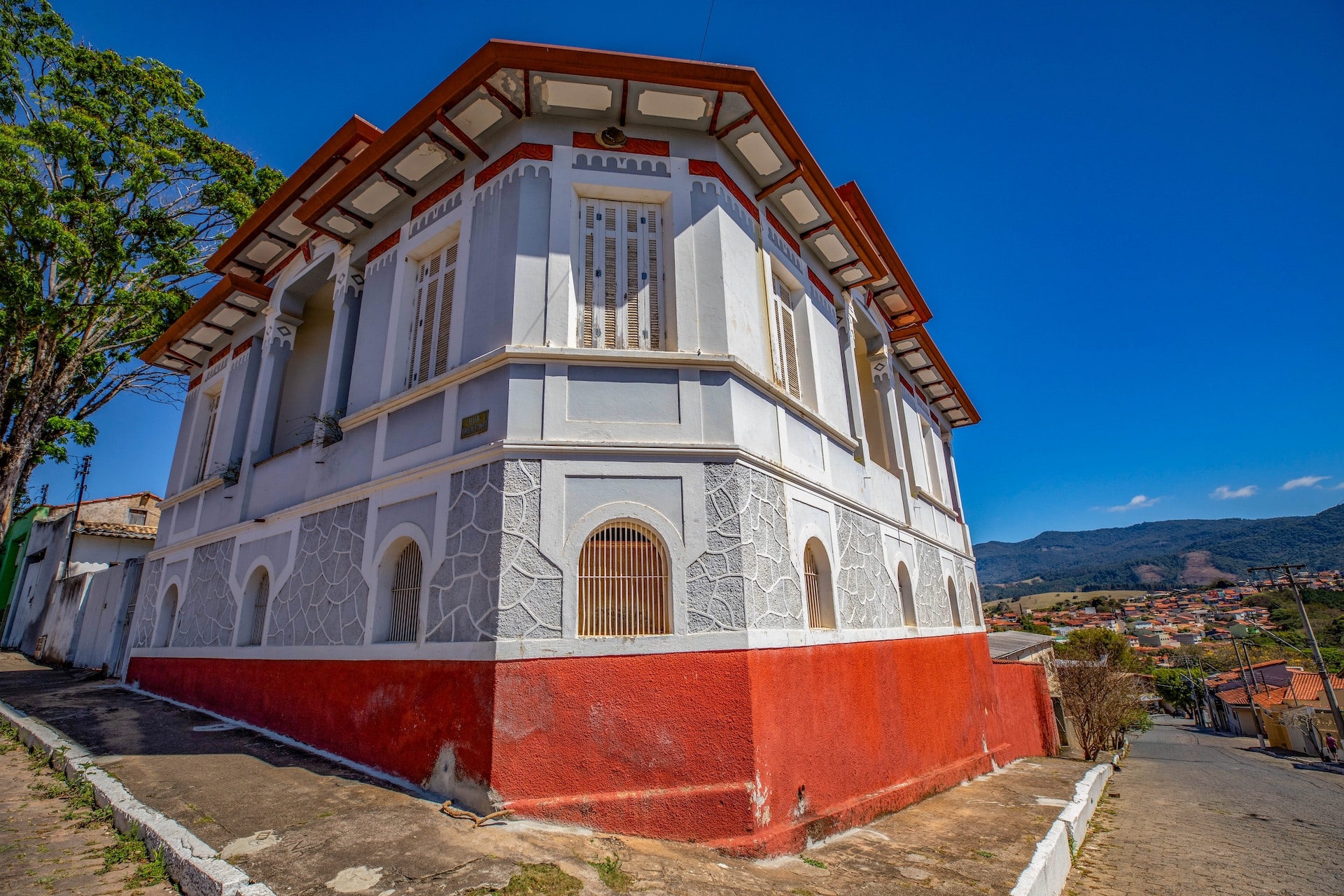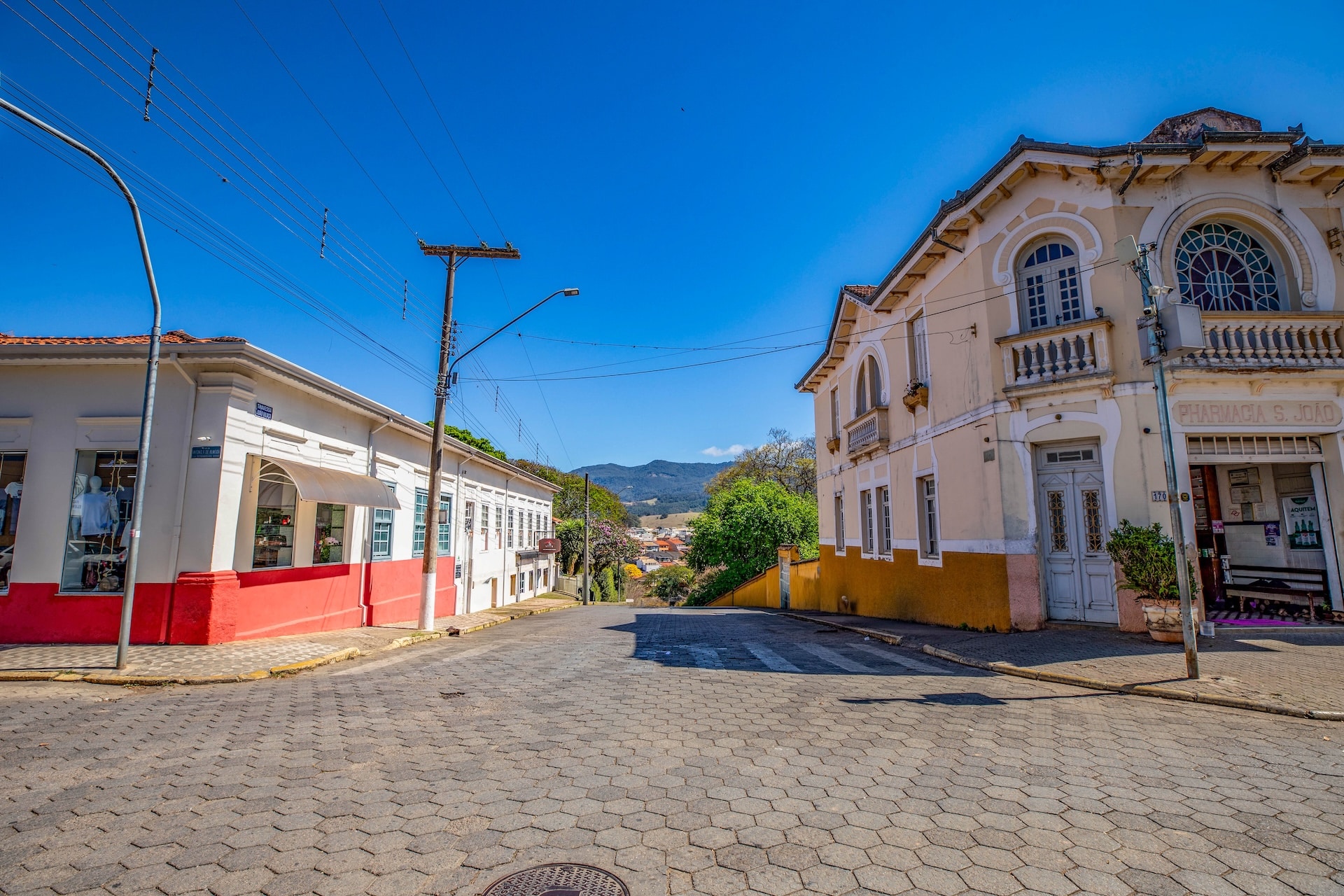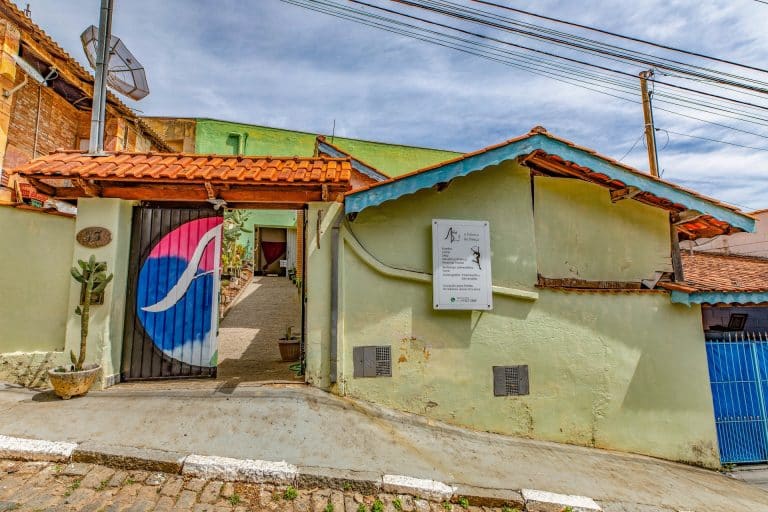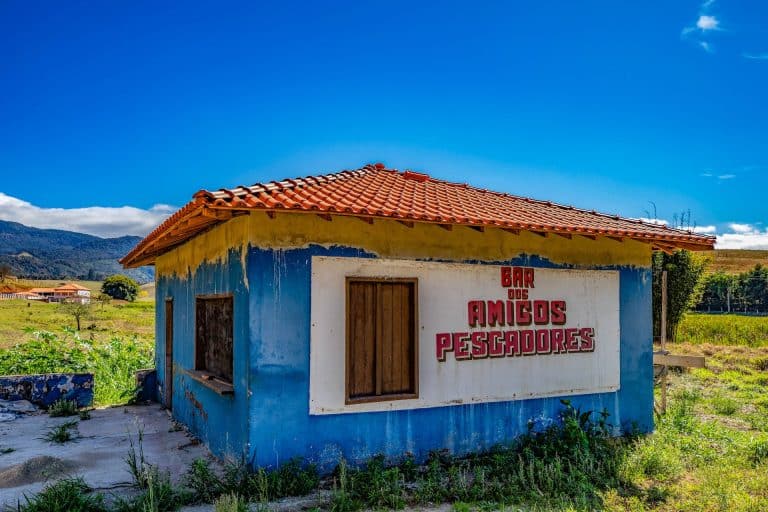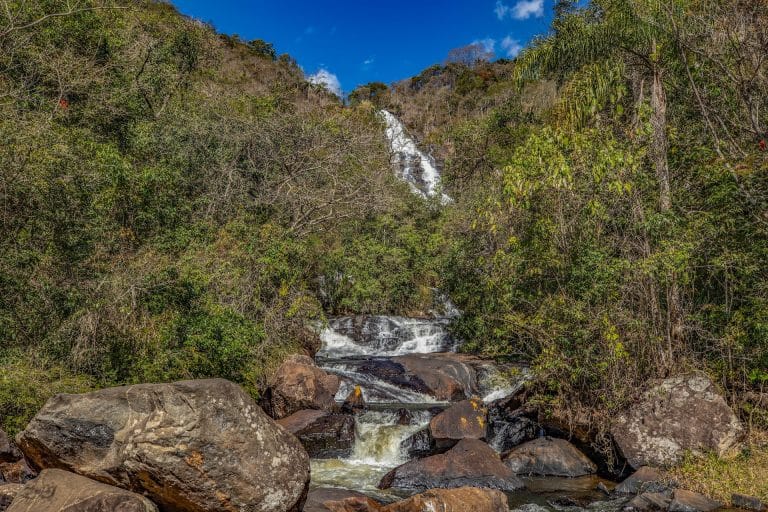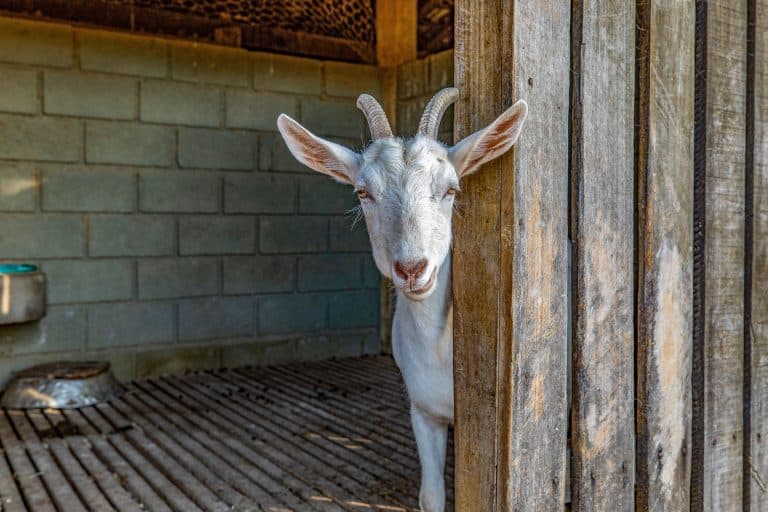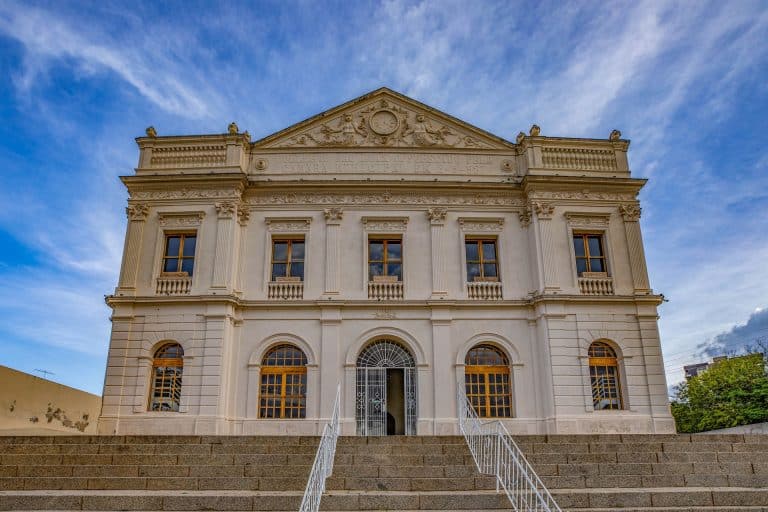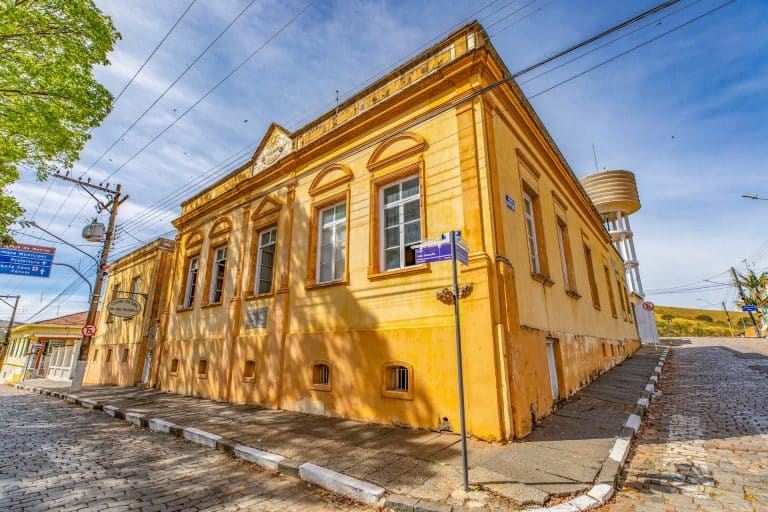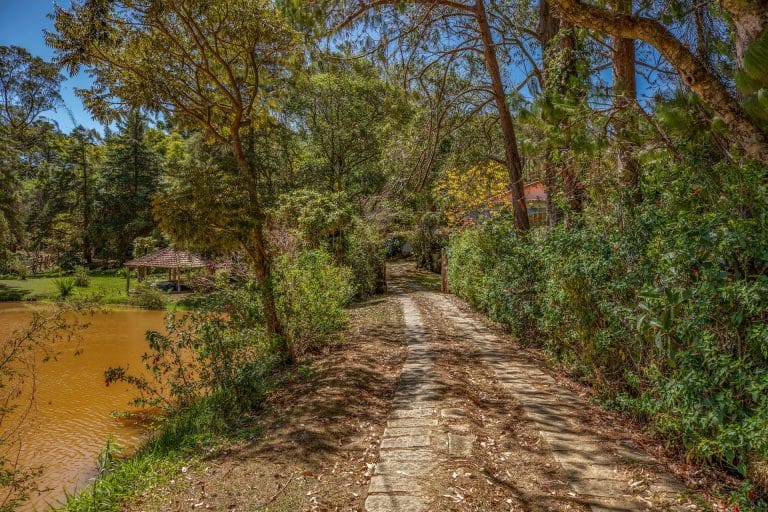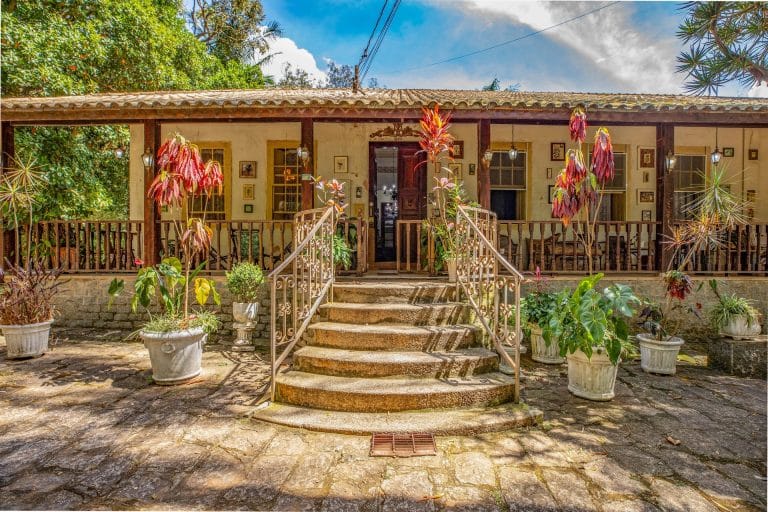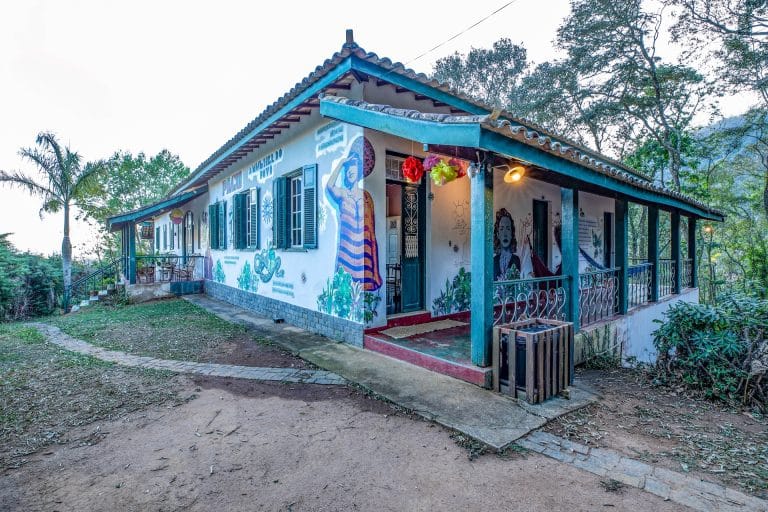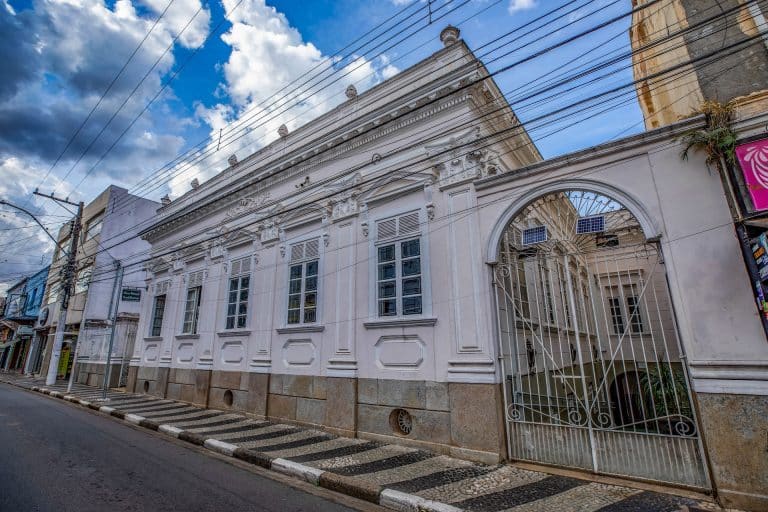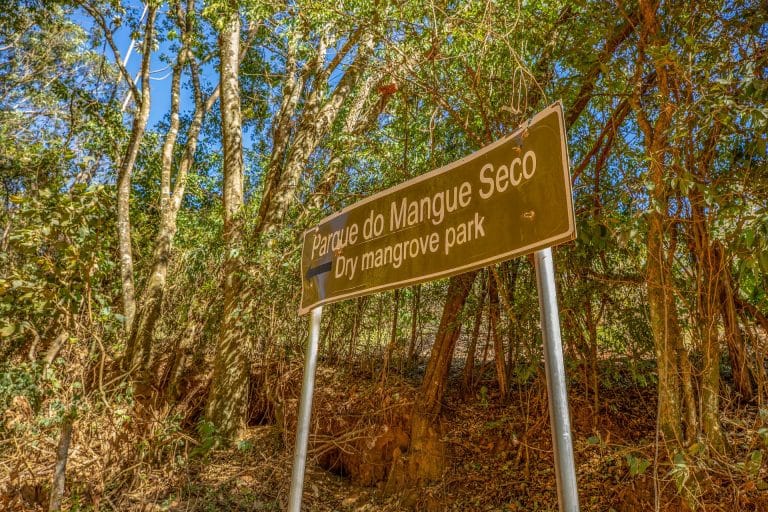Founded in 1898 during the festivities honoring São João Batista on the banks of the Jaguari and Cachoeira rivers, Joanópolis actively maintains its religious, folkloric, and cultural heritage. Located in the Serra da Mantiqueira mountain range, the town prospered through coffee cultivation, and its history is clearly visible in the diverse wealth of locations it offers for cinematic storytelling.
With nearly a century of history, Pharmacia São João is a testament to long-standing local commerce, preserving original architectural elements that blend the neoclassical and São Paulo-colonial styles. Its symmetrical façade, carved-wood detailing, and beveled-glass windows faithfully reflect the aesthetics of its time.
Among the town’s striking landscapes is the Parque do Mangue Seco, a section of the Jaguari-Jacareí Reservoir. During the dry season, typically between July and November, this area undergoes a dramatic transformation, revealing parched and cracked mudflats, dry tree trunks, and formerly submerged vegetation. Evoking the stark appearance of Brazil’s caatinga biome, the location offers a truly distinctive and versatile setting for audiovisual productions.
A highlight of the region’s natural features, the Pedra do Gigante Adormecido rock formation makes a powerful impression due to its unique shape, which, from a distance, resembles the outline of a reclining, “sleeping” giant. Its dramatic presence is further amplified by the captivating tales woven into local folklore. Chief among these is the legend of the werewolf, said to be as old as the town itself, which led to the mythical creature being adopted as the town’s mascot. The myth gained momentum with rumors that Anselmo Caparica, one of the municipality’s founders, was a werewolf himself. A tall man known for his nocturnal habits and for always donning a cloak, Caparica became the focal point of attention whenever the full moon rose.
Piracaia, a town in the Circuito das Serras e Águas region, traces its history back to the 19th century, when the area was still being explored by bandeirantes, or frontiersmen. Founded in 1859 as Santo Antônio da Cachoeira, the settlement grew adjacent to its waterfalls, utilizing their critical water supply, with its subsequent development driven by São Paulo’s historic coffee boom.
The Igreja Matriz Santo Antônio da Cachoeira stands as one of the city’s main historical landmarks. Built in the 19th century, its design is a testament to São Paulo’s colonial architecture, distinguished by its simple forms and solid construction. The church’s interior features traditional and original elements such as wooden altars and religious images, which reflect the piousness of the town’s earliest inhabitants.
Another highlight is the Salva Fusca, a garage specializing in the restoration of vintage Volkswagen Beetles. The space has a distinct retro decor and a large collection of 1960s, ’70s, and ’80s Beetles on display, effectively making it an open-air vintage-car exhibition. This unique setting is an ideal backdrop for cinematic projects seeking a nostalgic atmosphere and striking visuals.
Bragança Paulista is also an excellent option for filming in the region. Officially founded in 1763 and named after the Portuguese royal House of Bragança, it played a key role in the 19th-century coffee boom. It was instrumental to the economic development and consolidation of the São Paulo countryside, and is notable for its well-preserved historical buildings.
Built in 1885, the Fazenda Bocaina now serves as the headquarters of the Associação dos Cafeicultores, or Coffee Growers’ Association, and stands as a significant landmark in the region’s history. Its architecture, typical of the coffee boom era—with symmetrical wooden windows and doors, sturdy structures, and traditional roofs—retains the distinctive character of São Paulo’s rural interior.
Keeping pace with urban growth and the rise of civil aviation in Brazil, the Aeroclube de Bragança Paulista was founded in 1939 as a training hub for pilots in the region. Its facilities still retain their original character and include three hangars, more than twenty light aircraft for training and recreational flights, as well as two buildings dedicated to aircraft maintenance and documentation.
Joanópolis and its surroundings offer a wealth of settings and powerful narratives primed for the screen, equally suitable for feature films, TV series, or advertising campaigns.
Key information about Joanópolis
Attractions
Estimated population:
Climate:
Safety and control
Public and Private Agencies and Entities
Useful Contacts
Infrastructure
Telecommunications Operators:
- Claro
- Tim
- Vivo
Banking Networks:
- Banco do Brasil
- Bradesco
- Caixa Econômica
- Caixa Eletrônico 24h
Services - accommodation and food
Safety and control
Services - Technical and Logistical Support
Equipment companies for film productions
- Sound equipment companies
- Video production companies
Spaces for logistical support:
- Open areas for the assembly of temporary structures
- Cultural centers
- Industrial warehouses
General Services
General services available
- Post offices
- Van rental
- Registry offices
- Shopping centers
- Pharmacies
- Hospitals
- Local press
- Markets
- Banking Networks
Audiovisual industry professionals
- Assistant directors
- Production assistants
- Actors
- Sound editors
- Gaffer
- Recording studios
- Costume designers
- Makeup artists
- Key grips
- Editors
- Camera operators
- Audiovisual producers
- Sound effects artists
- Best boys
- Sound technicians

